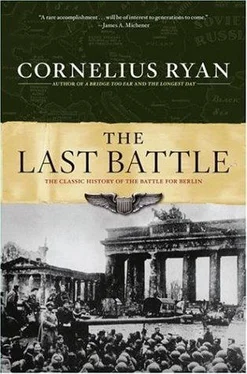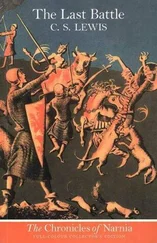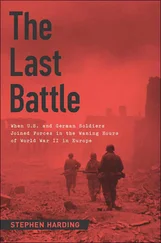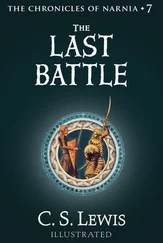The Brigadier was also concerned about another related problem: the concentration and labor camps. There had been some information about them via neutral countries, but no one knew how they were run, how many people they contained or what conditions were like. Now it looked as if the British Second would be the first army to overrun a concentration camp. On his desk was a report that one lay directly in the path of their advance, in the area north of Hanover. There was almost no further information about it. Brigadier Hughes wondered what they would find. He hoped the Germans had shown their usual thoroughness in medical matters, and had the health situation under control. He had never heard of the place before. It was called Belsen.
 5
5 
CAPTAIN HELMUTH CORDS, a 25-year-old veteran of the Russian front, was a holder of the Iron Cross for bravery. He was also a prisoner in Berlin—and he probably would not live to see the end of the war. Captain Cords was a member of an elite group—the small band of survivors of the seven thousand Germans who had been arrested in connection with the attempted assassination of Hitler eight months before, on July 20, 1944.
Hitler had wreaked his vengeance in a barbaric orgy; almost five thousand alleged participants had been executed, the innocent and the guilty alike. Whole families had been wiped out. Anyone even remotely connected with the plotters had been arrested and, as often as not, summarily executed. They had been put to death in a manner prescribed by Hitler himself. “They must all be hanged like cattle,” he had ordered. The principals were hanged in exactly that fashion—from meat hooks. Instead of rope most of them were strung up with piano wire.
Now, in Wing B of the star-shaped Lehrterstrasse Prison, the last group of the alleged plotters waited. They were both conservatives and Communists; they were army officers, doctors, clergymen, university professors, writers, former political figures, ordinary workingmen and peasants. Some had no idea why they were imprisoned; they had never been formally charged. A few had been tried, and were awaiting retrial. Some had actually been proved innocent, but were still being held. Others had been given sham trials, had been hurriedly sentenced, and were now awaiting execution. No one knew exactly how many prisoners there were in Wing B—some thought two hundred, others fewer than one hundred. There was no way of keeping count. Each day prisoners were taken out, never to be seen again. It all depended on the whims of one man: the Gestapo chief, SS Grüppenführer Heinrich Müller. The incarcerated expected little mercy from him. Even if the Allies were at the very prison gates, they believed Müller would continue the butchery.
Cords was one of the innocent. In July, 1944, he had been stationed at Bendlerstrasse as a junior officer on the staff of the Chief of Staff of the Reserve Army, Colonel Claus Graf von Stauffenberg. There was, as it turned out, just one thing wrong with that assignment: the distinguished-looking, 36-year-old Von Stauffenberg—he had only one arm and wore a black patch over his left eye—was the key figure in the July 20 plot, the man who had volunteered to kill Hitler.
At the Führer’s headquarters in Rastenburg, East Prussia, during one of Hitler’s lengthy military conferences, Von Stauffenberg had placed a briefcase containing a time bomb beneath the long map table near where Hitler stood. Minutes after Von Stauffenberg had slipped out of the room to start back to Berlin, the bomb exploded. Miraculously, Hitler had survived the blast. Hours later in Berlin, Von Stauffenberg, without benefit of a formal trial, was shot to death in the courtyard of the Bendlerstrasse headquarters along with three other key military figures in the plot. Everyone even remotely associated with him was arrested—including Helmuth Cords.
Cords’s fiancée, Jutta Sorge, granddaughter of the former German Chancellor and Foreign Minister Gustav Stresemann, had also been arrested and imprisoned. So had her mother and father. All of them, including Helmuth Cords, had been held without trial ever since.
Corporal Herbert Kosney, imprisoned in the same building, knew even less about the July 20 plot than Cords. But Kosney had been implicated unwittingly. He was part of a Communist resistance group, and his participation in the assassination attempt had consisted of transporting an unknown man from Lichterfelde to Wannsee.
Although not a Communist, Herbert had been on the fringes of various Red underground groups since 1940. In November, 1942, while he was on military leave in Berlin, his elder brother Kurt, a member of the Communist Party since 1931, had violently dissuaded Herbert from returning to the front: he broke Herbert’s arm with a rifle, took him to a military hospital and explained that he had found the injured soldier lying in a ditch.
The trick worked. Herbert never returned to the front. He was stationed with a reserve battalion in Berlin and every three months got a new medical certificate from Dr. Albert Olbertz which kept him on “light duty.” Dr. Olbertz happened to be a member of a Communist resistance group, too.
It was Olbertz who brought about Herbert’s imprisonment. A few days after the attempt on Hitler’s life, Olbertz told Herbert to come with him on an urgent transportation job. Taking a military ambulance, they picked up a man unknown to Herbert—a senior officer in the Gestapo, General Artur Nebe, Chief of the Criminal Police, who was wanted for questioning. Some time later Nebe was captured; so were Olbertz and Herbert. Olbertz committed suicide; Nebe was executed; Herbert was tried and condemned to death by a civilian court. But because he was still in the army a retrial by a military court was necessary. Herbert knew it was a mere formality—and formalities meant little to Gestapo Chief Müller. As he looked out his cell window, Herbert Kosney wondered how soon he would be executed.
Not very far away another man sat wondering what the future had in store for him—Herbert’s brother, Kurt Kosney. He had been interrogated again and again by the Gestapo, but so far he had told them nothing about his Communist activities. Certainly he had not revealed anything to incriminate his younger brother. He worried about Herbert. What had happened to him? Where had he been taken? Only a few cells separated the two brothers. But neither Kurt nor Herbert knew that they were in the same prison.
Although they were not in jail, another group of prisoners was living in Berlin. Uprooted from their families, forcibly removed from their homelands, they had but one desire—like so many others—and that was for speedy deliverance, by anybody. These were the slave laborers—the men and women from almost every country that the Nazis had overrun. There were Poles, Czechs, Norwegians, Danes, Dutch, Belgians, Luxembourgers, French, Yugoslavs and Russians.
In all, the Nazis had forcibly imported nearly seven million people—the equivalent of almost the entire population of New York City—to work in German homes and businesses. Some countries were bled almost white: 500,000 people were shipped out of diminutive Holland (population 10,956,000) and 6,000 from tiny Luxembourg (population 296,000). More than 100,000 foreign workers—mostly French and Russian—worked in Berlin alone.
The foreign laborers were engaged in every conceivable type of work. Many top Nazis acquired Russian girls as domestic servants. Architects engaged in war work staffed their offices with young foreign draftsmen. Heavy industry filled its quotas of electricians, steelworkers, diemakers, mechanics and unskilled laborers with these captive peoples. Gas, water and transportation utility companies “employed” extra thousands—with virtually no pay. Even German military headquarters on Bendlerstrasse had its allotment of foreign workers. One Frenchman, Raymond Legathière, was employed there full time replacing window panes as fast as the bomb blasts blew them out.
Читать дальше

 5
5 










